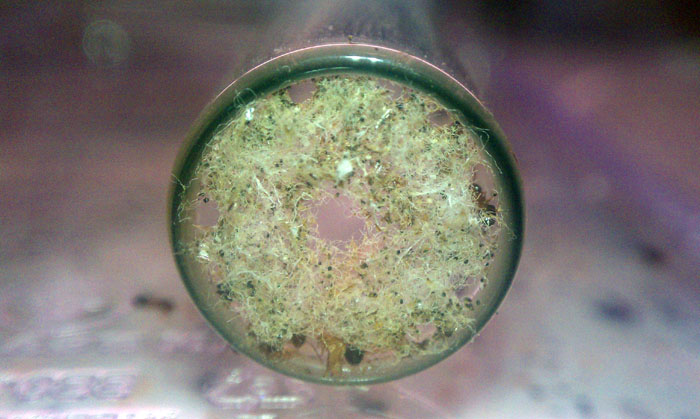Those cotton balls look like they are in the lid. I do the same thing for access and ventilation.
Exactly. They're on the lid, in 3/4" holes.
I bought 40, 60, and 80 mesh that I planned to use to cover holes, but I've struggled to find an easy (and aesthetically clean) way to adhere the mesh to the acrylic container (over the hole).
I've tried using: Krazy Glue (isn't a solvent/doesn't melt plastic into mesh), Oatey PVC Cement, and SCIGRIP 16 for Acrylics as types of glue. None are easily applied with the precision/detail I want. The latter two worked but are sloppy.
In the end, I gave up (although I still have Loctite Plastic Bonding System epoxy which I haven't tried) when I realized how much easier cotton would be.
The ants love to customize their nests. This Crematogaster colony I used to have used cotton strands and trash to close off their test tube.

That's awesome/beautiful! Thanks for sharing!





















